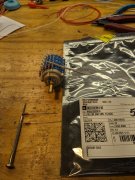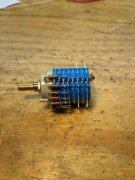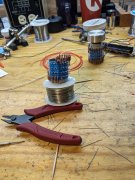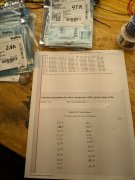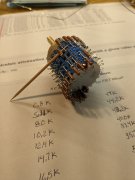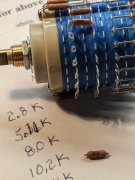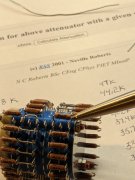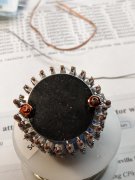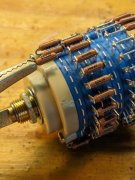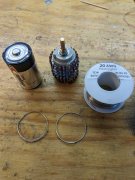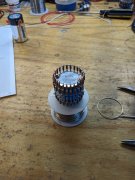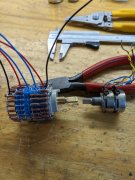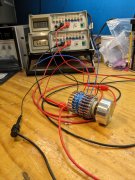I'm building another for the test unit, so I'd thought I'd start a "how to" thread for those interested.
The left channel circuitry is closer to the front, so here I'm loading the left channels 50k resistors which provide 50k impedance and no signal attenuation.
It gets a little confusing, but it'll make sense as we progress.
The important thing to note is to prep each resistor precisely, keep the printed value facing out, and soldering.
The switch plastic readily melts. So keep the resistor at the top of the tab slot, use fine diameter solder and a good clean and tinned tip. Get in, heat the tabs top and lead, apply solder, and get out. Don't melt the plastic or attempt to fill the slot.
Later, we'll be inserting another resistor into the bottom of the certain tab slots and we need them open.
Easy to do as we'll see.
The left channel circuitry is closer to the front, so here I'm loading the left channels 50k resistors which provide 50k impedance and no signal attenuation.
It gets a little confusing, but it'll make sense as we progress.
The important thing to note is to prep each resistor precisely, keep the printed value facing out, and soldering.
The switch plastic readily melts. So keep the resistor at the top of the tab slot, use fine diameter solder and a good clean and tinned tip. Get in, heat the tabs top and lead, apply solder, and get out. Don't melt the plastic or attempt to fill the slot.
Later, we'll be inserting another resistor into the bottom of the certain tab slots and we need them open.
Easy to do as we'll see.
Attachments
-
3 MB Views: 9

